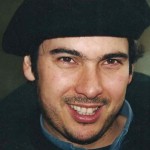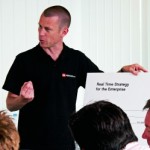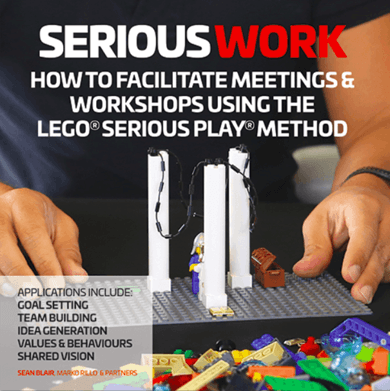Introduce yourself – who are you and why interested in LSP?
Tagged: Introduction, Serious Play Fan
- This topic has 14 replies, 10 voices, and was last updated 13 years, 2 months ago by
Carlos Martinez.
-
AuthorPosts
-
August 6, 2010 at 7:35 pm #1753
Gene Toland
ParticipantHello to all from Bolivia!
Perhaps I am unique to the group since I am a Roman Catholic priest and for some years I have been involved in leadership training programs for members of grass-roots organizations throughout Latin America. At present I work in Cochabamba, Bolivia as part of a multi-faceted training and formation center. In recent years I have been using such processes as scenario-building planning, and am a trained practioner in the Presencing social technology /methodolgy (Theory U). A couple years ago I became intrigued with the Lego Serious Play process but have not had the occasion yet to take a training program in it, but look to do so in the near future. However, in an amateurish way I have been using it in so far as I understand it. I find the principal of “play” as a learning environment right on in generating energy, participation and creativity. My interest in all of these methods is to provide people with tools to create and sustain spaces of interchange, dialogue and solidarity for living in a “common intercultural house”.
My personal interests are hiking, music, history, learning about various cultures, and dynamics of social change. i look forward to learning from all of you.
Maryknoll Center- Cochabamba, Bolivia
http://www.cmmalbolivia.org/
http://www.semillabolivia.org/October 11, 2010 at 5:18 pm #1769 Donna DenioParticipant
Donna DenioParticipantIt is great to see the smiling faces of people I have known only by name!
I connected with Robert Rasmussen and LEGO SERIOUS PLAY in June 2003 and we have been collaborating ever since. At the time I was looking for partners for a fledgling non-profit I had co-founded called Center for Balance by Design. The mission of CBD is to apply design thinking and design processes to optimize teamwork. Our work was based on research conducted at MIT by SPORG (Space Planning and Organizational Research Group). Robert immediately became intrigued with our mission. He donated bricks and training.
Founders of CBD participated in a full LSP strategy session. We had passion and felt that, together, we could transform workplaces and the world. The biggest challenge was that we could not figure out the “IT” that we had. Recent finding about collective intelligence (see my post earlier today) describe a group wisdom that far exceeds individual intelligence. I have experienced the impact of this dynamic energy many times, but did not have words or a scientific term to describe what I saw and felt.
I completed certification training both in 2003 and 2006 and have supported Robert during several of his U.S. workshops.
LSP can give voice to the emotional and social intelligence in all of us. It is such an honor to be able to give people the gift of LSP.
In terms of my personal interests, I love to travel, garden, paint with water colors, bird-watch, square dance and plan and attend parties. I mentor young women through Big Sister, Rotary International and a group I co-founded called WELL (Women’s Exchange for Leadership and Life). I have been married for thirty-four years to Bruce Conklin, and environmental engineer. The first two years of our marriage, Bruce and I lived and worked in both the Philippines and Egypt. I always say we had a two-year honeymoon.
January 9, 2011 at 6:56 pm #1799 LuisParticipant
LuisParticipantHi all,
I´m creative director at DYB – http://www.designybusiness.com
but totaly new at LSP.
I suppose the right way is starting reading the open source brochure!?!
is it?
Looking forward to be in touch with all you out there
thank you allbest regards
January 9, 2011 at 7:17 pm #1800 Per KristiansenParticipant
Per KristiansenParticipanthi Luis
Welcome
The open source is good place to start, as is the “official” seriousplay.com web, but you probably have already had a good look at that. You might also look for some of the old papers from the Imagination Lab. These are academic papers based on data gathered through LEGO SERIOUS PLAY workshops. Whilst not exactly practical, they may give you an idea as to why the method works.
Obviously, it also makes good sense to get the full training at some point
Good luck, and feel free to raise any question in this forum or to send a message directly
Per
February 10, 2011 at 9:01 am #1801Carlos Martinez
ParticipantHi,
I am the owner of Nordkom (www.nordkom.es) and the LSP concept resounds with my view of how a learning space should look like.
I am considering to include the LSP methodology in my offering and i will need your help to answer some questions for my business plan:Once an LSP workshop is finished, is the customer supposes to keep the kits, the constructions used? or, on the other hand, can the kits be regarded as reusable? if so, how many times according to your experience?
thanks in advance, Carlos
February 10, 2011 at 9:20 am #1802 Per KristiansenParticipant
Per KristiansenParticipanthi Carlos
Great to hear that you are considering using LSP, and a good + important question you are raising.
I would venture that there are several answers:
1. There is always a particular strength when the client keeps the bricks, but if you are running a learning space to which they are coming for the experience, then that may be less important, ie they are coming to a particular space rather than creating it in their offices2. Client keeping the construction: This can very powerful. I have just come back from a meeting with a client, they still have their aspiration in the middle of the CEO’s office, and refer back to it actively when discussing actions. I would think that you could either offer to keep their model at your place so that they could come back and continue working with it, updating and revising as they move forward, or they could get the offer of bringing it back. I have had clients where the models where used when reporting to the board.
3. The challenge with re-using the kits is the box in which you keep them. They are delivered in cardboard boxes, which after a couple of months starts to loose their “appeal”. Some of my clients have found solutions to this by going to IKEAIn short, I would suggest that you dont limit your self to one solution, but design it so that depending on the clients needs they either bring back the kits, their particular model or nothing at all
Hope this clarified a little
PerFebruary 10, 2011 at 10:03 am #1803Carlos Martinez
ParticipantHi Per,
thanks for your reply, quick and neat!
The different options make a big impact on the costs for a workshop. May I ask, how do you handle this? a separate – optional line in the proposal price?Thank you!
CarlosFebruary 10, 2011 at 10:21 am #1804 Per KristiansenParticipant
Per KristiansenParticipanthi Carlos
As I (we) dont have a space of our own, our situation is a little different. However, yes the materials are a separate line in the proposal. On occasions I leave up to the client to decide afterwards if they want to purchase the model/bricks. I always ask the client to buy some sort of kit for the opening (skills building)February 10, 2011 at 3:56 pm #1805Carlos Martinez
Participantnice advice Per, have a good day!
Thank you, Carlos
-
AuthorPosts
- You must be logged in to reply to this topic.

